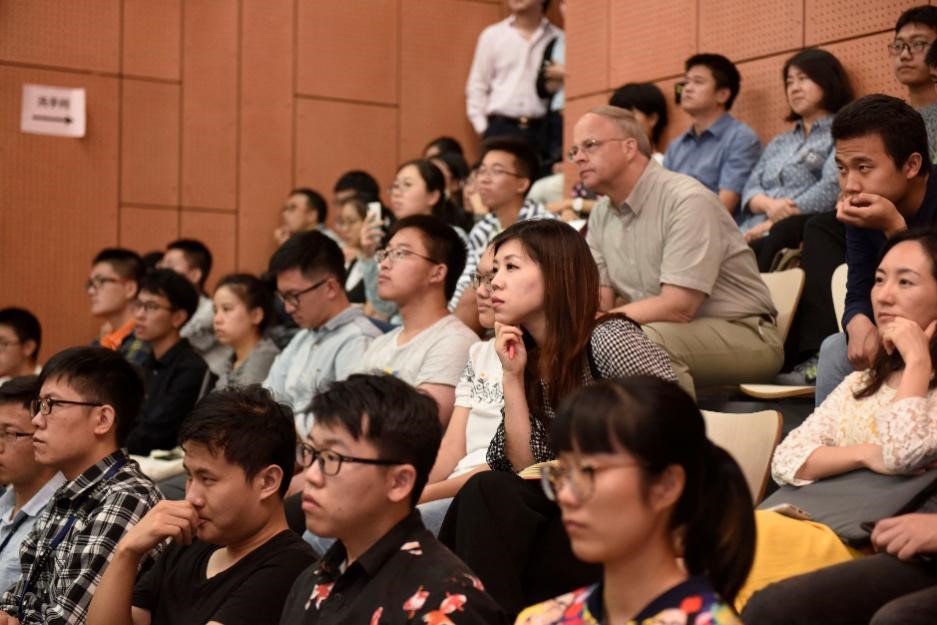On the afternoon of October 30, 2018, MIT Professor Chen Gang was invited to give the 192nd lecture in the SUSTech Lecture Series. His presentation, entitled “MIT Educational Environment and Innovations,” saw a packed lecture theatre of faculty members and students.
Chen Gang is a member of the National Academy of Engineering. He is currently Principal Investigator of the Solid-State Solar Thermal Energy Conversion Center (S3TEC Center) and the Carl Richard Soderberg Professor at the Massachusetts Institute of Technology (MIT).
Measuring three aspects of top universities
In the lecture, Chen Gang first proposed the conditions necessary for top universities, that is, must have excellent students, teachers, and environment, and especially emphasized the excellent environment. In addition to the material environment, more important is the soft environment, including the relationship between teachers and students, the organization of the school, and mutual exchanges.
Innovations in large classes teaching
Chen Gang pointed out that MIT is not only known for its cutting-edge research, but also for its educational innovation. MIT first requires professors to have enthusiasm for excellence in teaching and research. Secondly, it encourages professors to learn and cooperate with each other in group teaching. Thirdly, MIT wants its professors to pursue excellence in teaching, while fully respecting the professor’s educational autonomy.
Chen talked about MIT’s approach to teaching in large classes, using three professors for one lecture. One professor will give the lecture at the front of the room, while the other two professors will listen in the back row to correct them on the spot. At the same time, the two professors are divided into two small classes to tutor students. This creates a high level of pressure on the professors when preparing each lecture. The classes are often prepared well in advance, with the three professors and teaching assistants sitting down for an hour every week to discuss teaching matters. Since the teaching materials for each assignment are taught by the professor, the professor will discuss every question and every assignment of the students. Even before the exam, the three professors must first test the questions to ensure accuracy.
Chen Gang also illustrated MIT’s teaching innovation by listing innovative courses offered by MIT.
Chen Gang also talked about the innovative curriculum and gave examples from his own Department of Mechanical Engineering. With MIT’s 1+3 education model, similar to SUSTech’s 2+2 model, first-year students are not yet professional engineers, so a course had to be designed to get them interested and engaged in the area. Their answer was to open a toy design course (Toy Product Design). The content of the course is to design children’s toys. The course requires students and children to communicate, so that the students understand the needs of children, and thus design toys that satisfy children. The students will then show products at the end of the semester. Due to the lively content of the course, it is very popular among students. In fact, it has become so popular that far more students seek a place in the course than could ever be accepted. The professor will also interview the selected students, mainly to examine the students’ preference for the course, rather than the students’ knowledge and experience in this area. This is to screen out certain students.
Innovative curriculum design to cultivate students’ innovative ability
When it comes to innovative courses, MIT will teach through competition. For example, the Robotic Design and Manufacturing course started in 1979. Students design and produce robots and compete for the first place through competitions. The final competition is traditionally held in the Johnson Ice Rink over one night and attracts faculty members, students and people from the nearby area. MIT also holds global competitions, such as the International (United States) FIRST Robotics Competition, which is open to students from all over the world, from primary school students to college students. The use of competition means that teams view each other as both allies and opponent. Just like in life, there will be confrontation and cooperation, so the students are cultivating necessary skills to enter society in the future.
Chen Gang also mentioned the Product Engineering Process (PDEP) course. At the beginning of the semester, the professor will design a theme for the course and let the students team up to complete the task. Generally, a team of 20 students starts to divide into 2 groups and conduct market research, analyze, discuss and reach an agreement on what products have market value. The two groups spend time experimenting and creating, working together to make the product. The final presentation of their product takes place in Kresge Auditorium in front of over one thousand guests, as well as far more offline. The teams need to deeply understand their products, as well as how to communicate to a diverse range of audiences.

After the lecture, the faculty members and students asked numerous questions about MIT’s educational philosophy and teaching model.
Proofread ByXia Yingying
Photo ByStudent News Agency